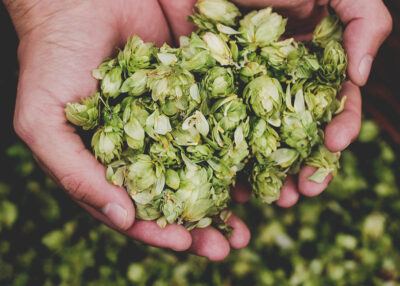If you’re a fan of a cold IPA, you may have noticed another three letter acronym on can labels or taproom chalkboards. It’s “DDH” and stands for a Double Dry Hopped India Pale Ale.
But how familiar are we really with the style? Like most terms in the beer world, it can be a little murky to define.
Let’s start with something everyone can agree on. In a dry-hopped beer, hops are added after the liquid has cooled, while it is fermenting in the tank. Traditionally, hops are used during the boiling portion of brewing. Dry-hopping helps to infuse brighter, more vibrant hop flavors and robust aromas without all the bitterness.
But it’s the “doubling” that is open to interpretation. Because it can be completed by either dry hopping twice or hopping with twice as many hops. This raises a valid question though, if it is twice the amount, then what should the original amount be? If there isn’t a set amount of hops to reference then it is hard to say what is double. And even if the process is repeated, the same question can be asked about the total quantity used.
So the process can differ for every brewer. But no matter what, the (more than usual) hops are added late in the process, which results in tropical fruit characteristics. Because of this, nearly all double-dry hopped beers are New England IPAs with notes of peach, pineapple and/or mango.
At Druthers, you can try our Double The Reason DDH Double NEIPA. The beer is part of our Raised Expectations Series and has notes of sweet candy, pineapple and citrus.
Cheers!
